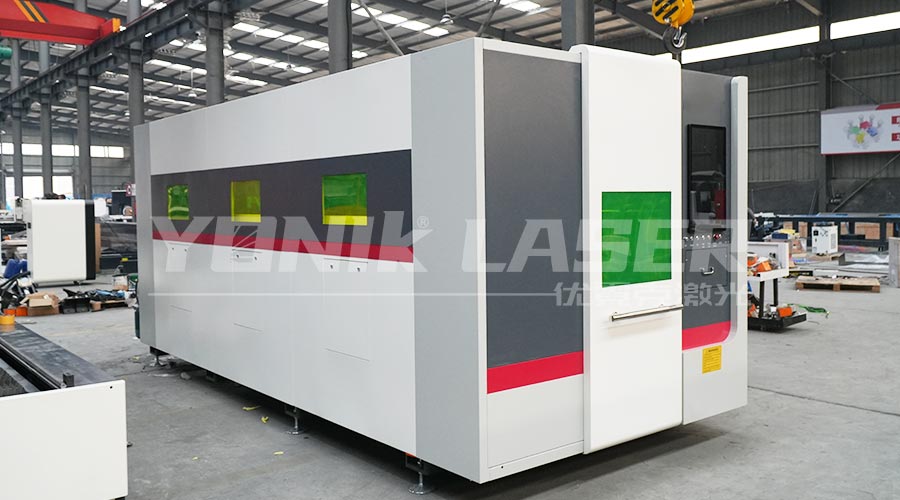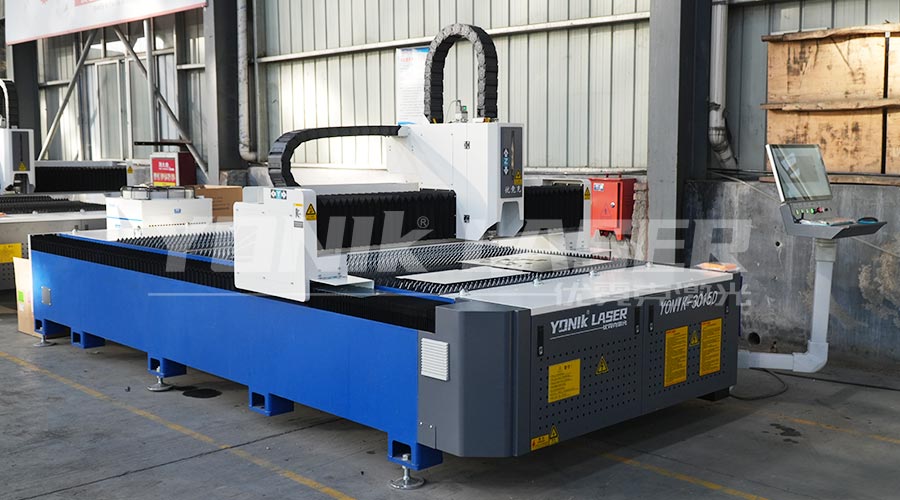In today's industrial manufacturing field, laser cutting machines have become indispensable equipment in many processing procedures with their high precision, high efficiency and high flexibility. However, the surface quality of workpieces after laser cutting is often affected by many factors. How to improve this quality has become the focus of many manufacturers and processors. This article will explore how to optimize the surface quality of workpieces after cutting with a laser cutting machine from multiple aspects.

First, the quality of the laser beam is a key factor that directly affects the cutting effect. To ensure high-quality cutting, the laser beam should have high beam quality, that is, a small focused spot diameter, a stable emission direction, good rotational symmetry around the optical axis and circular polarization. Such a laser beam can ensure stable power density during the cutting process, thereby obtaining fine incisions. Modern lasers usually have the function of fast switching of continuous and high-repetition output, which is particularly important for high-quality cutting of complex contours. In addition, the choice of lens focal length also needs to be reasonably adjusted according to the thickness of the material being cut to ensure the best focusing effect and cutting quality.
Secondly, the control of gas pressure and flow is also crucial in the laser cutting process. The airflow in the laser cutting machine not only has the function of blowing away the molten material, but also protects the focusing lens and provides some cutting energy. When the gas pressure is too low, the molten material at the incision cannot be effectively blown away, resulting in a rough incision surface; while too high pressure may form vortices on the workpiece surface, weakening the effect of the airflow in removing the molten material. Therefore, adjusting the appropriate gas pressure and flow rate according to the specific cutting materials and process requirements is a key step to improve the cutting quality.
The selection of cutting speed also has a significant impact on the cutting quality. The cutting speed depends on factors such as the power density of the laser, the thermophysical properties of the cut material and its thickness. A reasonable cutting speed range can ensure that the incision is clean and the cutting surface is flat. Too high a cutting speed may result in incomplete incision slag removal or even incomplete cutting; while too low a speed may result in overburning of the material, increase in incision width and heat-affected zone. Therefore, through experiments and experience summary, finding the most suitable cutting speed for a specific material is an effective way to improve the cutting quality.
In addition to the above factors, the planning of the cutting trajectory should not be ignored. For the cutting of parts with complex contours or inflection points, a reasonable cutting trajectory can avoid overheating and melting at the inflection point to form a collapsed angle. By optimizing the cutting trajectory, it can be ensured that the acceleration changes during the cutting process will not have a negative impact on the cutting quality.
In addition, the stability and performance of the equipment are also important factors affecting the cutting quality. To ensure that the laser cutting machine is always in the best working condition, regular maintenance and care are essential. This includes steps such as cleaning optical components, checking the status of the cutting head, and adjusting the optical path. Through timely maintenance and care, the service life of the equipment can be extended, and the cutting accuracy and surface quality can be improved.

In the process of improving the surface quality of the workpiece after cutting by the laser cutting machine, the introduction of automation equipment and technology can also be considered. For example, the automatic feeding system can reduce manual intervention and realize automatic loading and unloading of workpieces, thereby saving waiting and operation time. The use of automated cutting procedures can further reduce the tediousness of manual operation and improve production efficiency. The application of these automation technologies not only helps to improve cutting quality, but also reduces production costs and enhances the market competitiveness of enterprises.
In summary, improving the surface quality of workpieces after cutting by laser cutting machines requires starting from multiple aspects such as laser beam quality, gas pressure and flow control, cutting speed selection, cutting trajectory planning, equipment stability and performance, and the introduction of automation equipment and technology. By comprehensively considering these factors and taking corresponding optimization measures, the cutting quality of laser cutting machines can be significantly improved, laying a solid foundation for the sustainable development of industrial manufacturing. At the same time, the implementation of these optimization measures will also help improve the production efficiency and market competitiveness of enterprises, injecting new vitality into the long-term development of enterprises.
2025-07-22
2025-07-21
2025-07-19